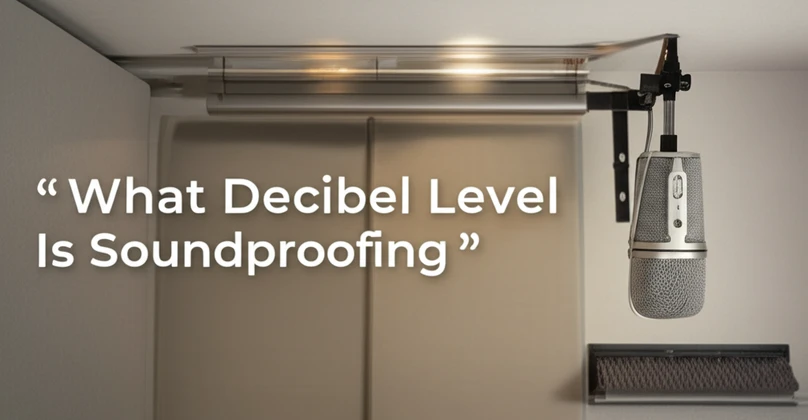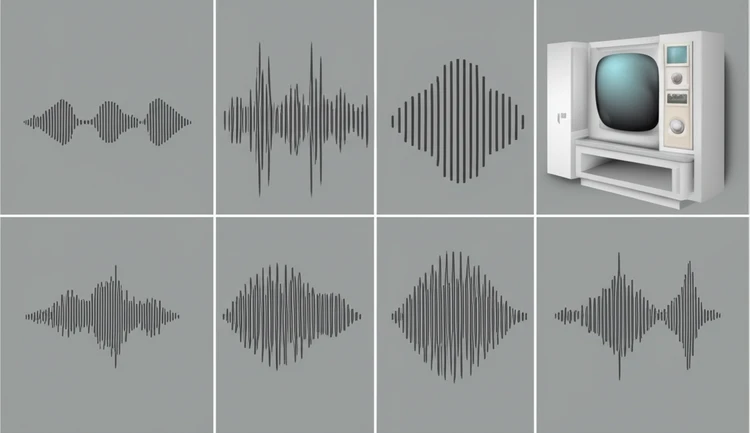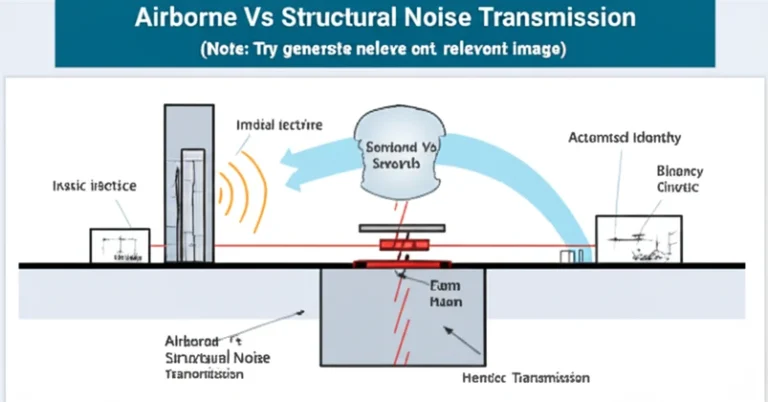
Soundproofing doesn’t target a specific decibel level but aims to reduce noise to acceptable levels for a given space. This means understanding how many decibels you need to reduce to achieve comfort and privacy, which varies depending on the initial noise level and your desired environment. Soundproofing reduces noise by blocking or absorbing sound waves, typically measured in decibels (dB).
Effective soundproofing can significantly reduce noise, creating quieter environments for homes, offices, and studios.
Noise pollution can be a significant challenge, affecting productivity, relaxation, and privacy. Understanding decibel levels and how soundproofing materials work is essential for creating quieter spaces. This guide delves into decibel levels, soundproofing techniques, and practical applications to help you make informed decisions about what decibel level is soundproofing best suited for your needs.
What Are Decibels (dB) in Soundproofing?
Decibels (dB) measure the intensity of sound on a logarithmic scale.
Each 10 dB increase represents a tenfold increase in sound power. For example, a noise level of 70 dB is ten times louder than 60 dB and one hundred times louder than 50 dB. It’s important to remember that the human ear perceives a 10 dB increase as approximately double the loudness.
Why Decibel Levels Matter
In soundproofing, the goal is to reduce the dB level of unwanted noise to a comfortable and functional range.
The target reduction depends on the initial noise level and the desired acoustic environment.
- Quiet environments: ~30 dB, ideal for libraries or bedrooms. This level allows for focused work and restful sleep.
- Moderate noise: ~50–60 dB, typical for conversations or offices. This range facilitates communication without excessive distraction.
- Loud environments: 70+ dB, such as traffic or industrial areas.
Prolonged exposure to these levels can be harmful to hearing.
Examples of Decibel Levels
- Whisper: ~20 dB
- Normal conversation: ~60 dB
- Lawnmower: ~90 dB
- Rock Concert: ~110-120 dB
The greater the reduction in dB, the more noticeable the improvement in the acoustic environment.
How Soundproofing is Measured
Soundproofing effectiveness is evaluated using metrics like the Sound Transmission Class (STC) and the Noise Reduction Coefficient (NRC). These ratings help quantify the performance of different soundproofing materials and techniques.
Sound Transmission Class (STC)
STC rates the ability of materials to block sound transmission between spaces. It’s measured by testing the sound loss through a partition at various frequencies, generating a weighted average.
The higher the STC rating, the better the sound insulation. It’s primarily used for walls, floors, ceilings, doors, and windows.
- STC 25-30: Minimal soundproofing; normal speech can be easily heard.
- STC 35-40: Loud speech can be heard, but muffled. Offers some privacy.
- STC 45–50: Good for privacy in most residential and office settings; loud speech is barely audible.
- STC 55-60+: Excellent for high-performance spaces like studios, home theaters, or spaces requiring significant noise isolation.
Noise Reduction Coefficient (NRC)
NRC measures how well a material absorbs sound rather than blocking it.
It’s an average rating of how much sound is absorbed at four frequencies (250, 500, 1000, and 2000 Hz) and is expressed as a number between 0 and 1. An NRC of 0 means no sound absorption (complete reflection), while 1 signifies complete absorption. It’s primarily used for materials within a room.
- High NRC materials (0.7+): Thick carpets, acoustic panels, specialized sound-absorbing insulation.
- Moderate NRC materials (0.4-0.7): Standard carpets, fabric-covered furniture.
- Low NRC materials (below 0.4): Hard surfaces like concrete, tile, and wood.
Ideal Decibel Levels for Different Spaces
Homes
For residential spaces, aim to reduce noise by 15–30 dB, depending on the source and intensity of the noise.
Common methods include sealing gaps, adding insulation, and using heavy curtains. Achieving a quieter home environment can significantly improve sleep quality and overall comfort.
Offices
Effective soundproofing in offices (STC 45–50 or higher) ensures privacy for meetings and minimizes distractions from conversations or equipment noise. This contributes to a more productive and focused work environment.
Studios
Recording studios require advanced soundproofing to block external noise and control internal acoustics.
A reduction of 50+ dB is typical for professional setups, ensuring high-quality recordings and preventing sound leakage.
Factors That Affect Soundproofing Performance
Material Density
Denser materials are generally more effective at blocking sound by reducing sound wave vibrations. However, simply using dense materials isn’t enough for effective soundproofing. Often, a combination of dense materials and sound-absorbing materials is necessary.
- Examples: Mass-loaded vinyl, concrete, drywall, and thick glass.
Room Design
The layout and construction of a room significantly impact soundproofing.
Sound can travel through various pathways, not just directly through walls. This is known as flanking noise.
- Gaps and Openings: Unsealed doors, windows, electrical outlets, and ductwork allow sound to leak through. Sealing these gaps is crucial for effective soundproofing.
- Shape and Size: Irregular shapes can help disrupt sound waves and reduce echoes, while large rooms require more extensive soundproofing measures.
- Construction Methods: Decoupling walls, ceilings, and floors (creating an air gap) can significantly improve sound isolation.
Frequency of Sound
Low-frequency sounds (e.g., bass) are harder to block than high-frequency sounds (e.g., speech).
Effective soundproofing often combines different materials and techniques to address a broad range of frequencies.
Effective Soundproofing Techniques by Decibel Level
Basic Soundproofing (5–15 dB Reduction)
- Install weatherstripping on doors and windows to seal air gaps.
- Add area rugs or carpets to absorb sound reflections within the room.
- Use thick curtains or blinds to reduce noise transmission through windows.
Intermediate Soundproofing (15–30 dB Reduction)
- Apply acoustic panels to walls to absorb sound reflections and reduce reverberation.
- Install soundproof windows with double or triple glazing and laminated glass.
- Use dense materials like mass-loaded vinyl (MLV) in conjunction with insulation for walls and floors.
Advanced Soundproofing (30+ dB Reduction)
- Build double-layer walls with resilient channels and soundproof insulation like mineral wool. This technique decouples the drywall layers, reducing sound transmission.
- Install solid-core soundproof doors with airtight seals. These doors provide significantly better sound insulation compared to hollow-core doors.
- Use floating floors to isolate sound vibrations.
This involves creating a separate subfloor layer that’s decoupled from the structural floor.
FAQ
What does a 10 dB reduction mean in soundproofing?
A 10 dB reduction halves the perceived noise level, making it significantly quieter. For instance, reducing 70 dB traffic noise to 60 dB creates a more comfortable environment. While a 3 dB change is barely noticeable, a 5 dB change is clearly noticeable, and a 10 dB change represents a halving or doubling of perceived loudness.
What is a good STC rating for soundproofing?
An STC rating of 45–50 is generally considered good for most homes and offices, providing effective noise reduction for common noise sources.
For recording studios, home theaters, or areas requiring greater noise isolation, aim for an STC of 55 or higher.
How can I increase soundproofing in my home?
To improve soundproofing:
- Seal all gaps: Use caulk or weatherstripping to seal gaps around doors, windows, electrical outlets, and penetrations for pipes and wiring.
- Add dense materials: Incorporate mass-loaded vinyl (MLV) behind drywall or under flooring. Use dense insulation like mineral wool in walls and ceilings.
- Absorb sound reflections: Install acoustic panels, thick carpets, or heavy curtains to reduce reverberation within the room.
- Upgrade doors and windows: Replace hollow-core doors with solid-core doors and install double-paned or soundproof windows.
Case Studies: Real-Life Applications of Decibel Reduction
Home Theater Soundproofing
A homeowner, aiming to reduce noise from a home theater, achieved a 28 dB reduction by adding a second layer of drywall with Green Glue damping compound and installing Rockwool Safe’n’Sound insulation in the walls and ceiling. Noise levels during loud movie scenes, previously reaching 85 dB in adjacent rooms, were reduced to 57 dB, creating an immersive experience without disturbing other occupants.
The STC rating of the wall increased from approximately 34 to 62.
Office Meeting Room Privacy
An office improved meeting room privacy by replacing the existing hollow-core door with a solid-core door with an automatic door bottom seal and upgrading the wall construction with an additional layer of drywall and sound-absorbing insulation. The STC rating increased from 30 to 48. This prevented conversations inside the meeting room from being overheard in the surrounding office space, ensuring confidentiality.
Music Studio Isolation
A music studio, aiming to reduce external noise intrusion and prevent sound leakage, achieved a 55 dB reduction by constructing a room-within-a-room with decoupled walls, ceiling, and a floating floor.
Resilient channels, dense insulation, and specialized soundproof windows were used. This created a professional-grade recording environment with minimal interference from external noise sources.
Expert Tips for Effective Soundproofing
- Identify Noise Sources: Pinpoint areas where noise is entering or exiting the space, such as doors, windows, walls, floors, and ceilings. This helps focus your soundproofing efforts on the most critical areas.
- Combine Methods: Use a combination of sealing techniques, absorption materials, and dense barriers for optimal results.
Addressing both airborne and structure-borne noise is crucial.
- Test and Adjust: Use a sound level meter (available as smartphone apps or dedicated devices) to measure the effectiveness of your soundproofing efforts and identify any remaining weak points.
- Consult with a professional: For complex soundproofing projects or when dealing with challenging noise issues, consider consulting with an acoustical engineer or soundproofing specialist.
Conclusion
Soundproofing is a process of reducing noise levels to desirable levels by lowering decibels through strategic material use and room design. It’s not about achieving a specific dB level but rather about creating a more comfortable and functional acoustic environment. Whether you’re enhancing privacy, boosting productivity, or improving audio quality, understanding decibel levels and utilizing appropriate soundproofing techniques can help you achieve your goals.
By implementing the strategies outlined in this guide, you can create quieter, more enjoyable spaces tailored to your specific needs.






